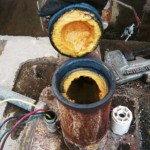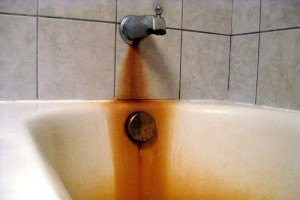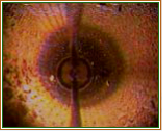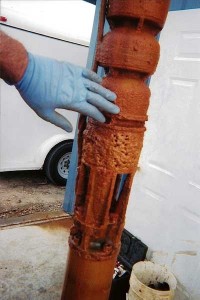Iron Bacteria & Other Common Water Well Problems.
Many water well problems can be corrected without incurring the expense of drilling a new well.

Iron Bacteria
Iron bacteria are commonly cited as the culprit for any “slime” problems found in a well. However only a very small percentage of the slime seen in wells and pipelines is actually iron bacteria, also referred to as iron oxidizing bacteria, or by its proper name, Gallionella.

The slime generated by iron bacteria isn’t a health hazard, but it can do damage in other ways. Along with the unpleasant odor, it can corrode pipes and plumbing equipment, and clog pipes, screens, and other components of the well system. The slime can also hamper the effectiveness of the well system’s water treatment components. It can overwhelm carbon filters, defeat bactericidal resins, and attack or plug reverse osmosis membranes and cartridge filters. In certain conditions, the bacteria can grow quickly and leave the entire well system virtually useless in just a few months.

Mineral Scale
Mineral scale (incrustation) is a common problem in some shallow water table type aquifers where there is an abundance of dissolved minerals including calcium, magnesium, and iron, as well as iron bacteria. When water is pumped from the well, changes in pressure and temperature occur. This creates ideal conditions for minerals to precipitate or settle out, causing scale formation on the casing, liner, and screens. A combination of good preventive maintenance and good management practices can minimize the effect of incrustation. Management practices that reduce water pumping rates can reduce the effects of mineral incrustation. A strategy of reduced pumping rate with longer pumping intervals helps prevent incrustation of screens and perforated liners.

Biofouling
Installing and pumping a well increases the level of oxygen and nutrients in the well and in the surrounding aquifer. Bacteria, such as iron bacteria, may thrive under these conditions. They can form a gel-like slime or biofilm that captures chemicals, minerals, and other particles such as sand, clays, and silts. Minerals, such as iron, oxidize and get trapped in the biofilm. Biofouling occurs where biofilm accumulations are sufficient to reduce water flow. This can mean reduced well yield and water quality.
Sediment in Water
The presence of sediment in water can be caused by many factors, including improper well design or construction, continuous over-pumping of the well, corrosion of well casing, liner, or screen causing holes that sediment seep through, or failure of the annular or casing seal.